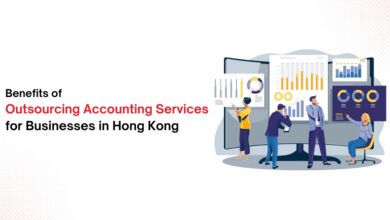Agile vs Waterfall: Which Development Model Works Best in Software Outsourcing?
Choosing the right development model is crucial for successful software outsourcing. Agile and Waterfall are two popular approaches, each with distinct advantages. Agile offers flexibility and rapid iteration, while Waterfall follows a structured, step-by-step process. But which works best in an outsourced setting? This article compares both models to help you make the right choice for your project.
Agile and Waterfall are key software development methodologies, each offering distinct advantages for outsourced projects
What is Agile?
Agile methodology transforms software creation through iterative development cycles and continuous client involvement. This flexible framework breaks complex projects into manageable sprints, enabling teams to adapt quickly to evolving requirements. In recent years, companies increasingly leverage software development outsourcing services with agile approaches to gain competitive advantages through faster deployment and enhanced product quality.
Key characteristics include:
- Customer-centric focus with regular feedback
- Self-organizing, cross-functional teams
- Emphasis on working software over documentation
- Strong communication between all stakeholders
Agile methodology boosts software development by promoting flexibility, collaboration, and rapid delivery
What is Waterfall?
Waterfall methodology structures software development into distinct, sequential phases where each must be completed before progressing to the next. This classic approach demands comprehensive upfront planning and documentation, creating a predictable roadmap for the entire project lifecycle. Traditional software development outsourcing services often rely on Waterfall for projects with stable, well-defined requirements where minimal changes are expected.
Key features include:
- Linear progression through requirements, design, implementation, verification, and maintenance
- Comprehensive documentation at every stage
- Clear milestones and deliverables
- Fixed scope established at project inception
- Limited client involvement after the requirements phase
The Waterfall methodology is a structured, sequential approach to software development ideal for projects
Key Differences Between Agile and Waterfall in Outsourcing Projects
The table below highlights the core distinctions between Agile and Waterfall methodologies in outsourced software development:
| Feature | Agile | Waterfall |
| Flexibility | Embraces change throughout development | Resistant to modifications after planning |
| Project Structure | Iterative cycles with continuous integration | Sequential phases with strict boundaries |
| Delivery | Working software increments after each sprint | Single delivery after all phases conclude |
| Documentation | Lightweight, focused on essentials | Comprehensive requirements and specifications |
| Client Involvement | Regular collaboration and feedback | Limited to requirements and acceptance phases |
| Testing | Integrated throughout development | Separate phase after development |
| Cost Estimation | Progressive refinement of estimates | Fixed upfront budgeting |
| Risk Management | Early identification through iterations | Risks often emerge late in lifecycle |
Pros and Cons of Agile for Software Outsourcing
The Agile methodology in outsourced development presents significant advantages and challenges for project stakeholders:
Pros:
- The approach enables rapid adaptation to changing business requirements
- Agile teams deliver working software in shorter timeframes
- The framework fosters transparent collaboration between teams
- Continuous testing identifies technical issues early
- Sprint reviews provide frequent opportunities to refine product direction
Cons:
- The process requires robust communication infrastructure
- Weak management may lead to scope creep
- The iterative nature makes precise cost projections challenging
- Success creates dependency on consistent stakeholder feedback
- Implementation demands cultural alignment between partners
Pros and Cons of Waterfall for Software Outsourcing
The traditional Waterfall approach offers specific advantages and limitations when implemented in outsourced software development projects:
Pros:
- Documentation provides clear, detailed specifications upfront
- The methodology delivers predictable budgets and timelines for fixed-scope projects
- The structure minimizes client involvement requirements after initial planning
- Project plans establish well-defined milestones and deliverables
- The approach supports regulatory compliance through comprehensive documentation
Cons:
- The rigid process resists requirement changes once development begins
- The sequential phases delay feedback until late project stages
- The methodology postpones testing until after development completion
- Misunderstandings increase risk of major rework
- The fixed structure creates difficulty adapting to market changes during development
The waterfall methodology is a structured sequential approach to software development ideal for projects
How to Choose the Right Model for Your Outsourced Project
The selection of an appropriate methodology for your software outsourcing initiative depends on several project-specific factors:
- Project requirements clarity: Complex requirements with potential for significant evolution favor Agile; well-defined, stable requirements suit Waterfall approaches.
- Timeline constraints: Projects demanding rapid market entry benefit from Agile’s incremental delivery structure; projects with fixed deadlines and detailed milestones align with Waterfall’s predictable scheduling.
- Budget flexibility: Organizations with strict budgetary limitations may prefer Waterfall’s upfront cost estimation; businesses valuing adaptability over fixed costs lean toward Agile frameworks.
- Stakeholder availability: The involvement capacity of key decision-makers determines methodology fit. Agile requires consistent engagement, while Waterfall demands intensive participation primarily during the initial and final phases.
- Partner expertise: When selecting the best software outsourcing company, prioritize vendors with demonstrated proficiency in your preferred methodology and adaptability to your organizational culture.
Choosing the right software outsourcing methodology depends on project clarity, timeline, budget, stakeholder involvement, and vendor expertise
Conclusion
The choice between Agile and Waterfall significantly impacts outsourcing success. Project requirements, stakeholder availability, and budget constraints form the foundation for this critical decision. Experienced providers of software development outsourcing services can evaluate your specific needs and recommend the most suitable approach, often implementing hybrid solutions that capture benefits from both methodologies.




